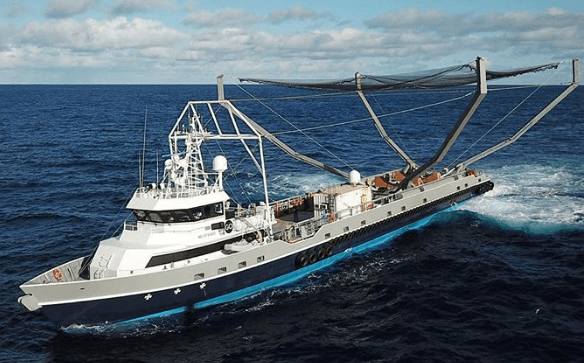SpaceX made an unusual attempt to catch the fairing (rocket’s nose cone) of the Falcon 9 rocket by fixing a giant net onto a ship, but missed it. The narrow boat – known by the name of Mr. Steven – had four giant arms with a net to catch the nose cone as it dropped from space.
Thursday’s launch also pushed Musk’s goal of delivering high-speed internet. The rocket along with the PAZ satellite carried two experimental satellites – nicknamed “Tintin A” and “Tintin B.” Both the satellites were launched with an objective to test the technology that the company is planning to use for its internet service.
Musk confirmed via a tweet that both the satellites were successfully placed into their orbit. SpaceX’s internet ambitions include putting over 1000 small satellites into Low-Earth Orbit, notes Fox43. “SpaceX projected the satellite-internet business would have over 40 million subscribers and bring in more than $30 billion in revenue by 2025,” the Wall Street Journal reported last year, citing SpaceX’s internal financial documents.
Talking about the event, SpaceX CEO – Elon Musk – stated that right after the launch on Thursday morning they were ready with the arrangement. The cone, however, dropped just a few hundred meters away from the boat, but did land intact in the water and stayed afloat. It is not known if the part can be used again. Chances are thin, because the seawater might harm the fairing without proper shielding, notes The Verge.
The fairing is a part of the rocket, specifically an earplug-shaped part fitted on the top. The fairing helps in keeping the rocket’s aerodynamic profile just right, and safeguards the payload from Earth’s atmosphere as the rocket heads towards space. Once the rocket is in space, the fairing breaks into two parts, and falls back to earth. The fairing is detached to lower the weight as the rocket nears space.
Missed by a few hundred meters, but fairing landed intact in water. Should be able catch it with slightly bigger chutes to slow down descent.
— Elon Musk (@elonmusk) February 22, 2018
Usually, companies do not bother about the fairings, but Elon Musk has always been interested in finding a way to save the hardware. During a press conference in March 2017, Musk opened up on why he wants to save the fairings. “Imagine you had $6 million in cash in a palette flying through the air, and it’s going to smash into the ocean,” Musk said. “Would you try to recover that? Yes. Yes, you would.”
SpaceX has successfully been able to recover and re-use Falcon 9’s first stage, and this bolstered their confidence to do the same with the fairing. The company has been partly successful during testing with Falcon 9’s standard fairing, being able to bring part of the fairing back to the shore after a controlled landing at sea during the SES-10 launch last year in April.
Back in January, a Space X Falcon 9 rocket fell into the Atlantic Ocean in a single piece. At the time, Musk said that they would attempt to drag the rocket up to the shore. However, it never happened as the “stage broke apart before we could complete an unplanned recovery effort for this mission,” SpaceX said then.
Musk, however, is hopeful that the company would be able to fix the problem by making the parafoils bigger. “My guess is next six months we’ve got fairing recovery figured out,” he said during the Falcon Heavy launch press conference.
The Falcon 9 rocket this time was carrying the PAZ satellite. It is a radar imaging satellite operated by the Spanish company Hisdesat. It would offer day and night, all weather imaging capabilities for Hisdesat’s customer, Spain’s Ministry of Defense. PAZ was supposed to be launched last Sunday, but was rescheduled to Wednesday. The launch was postponed again due to the upper winds being above the acceptable limits, notes NASA Spaceflight.com.





